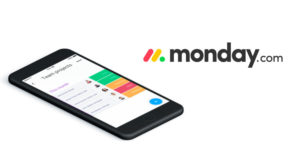
Businesses invest tremendous thought and capital in their physical workspaces – in the case of Apple’s ‘spaceship’ headquarters, as much as $5bn, to create the perfect environment for productivity, mood, team identity and practicality.
However for most of us today, even if you do your day’s work in a centrally-located office building which has won design awards, your real workplace is most likely your online collaboration platform. This is the place you log into daily, the space you step into, to work with your colleagues- whether they’re in the same room, or a different continent.
Your digital office
The digital workspace has become just as much our working ‘home’ as the physical space – but do we pay as much attention to its ergonomics, its qualities, and the kinds of culture and behaviour it encourages? Until recently we had little choice but to opt for the tool which best fit our work, and adapt the workflow to the tool if necessary. But today, a plethora of unified communications and collaboration tools are differentiating the market, giving customers genuine choice about the stack of applications they run to form their digital office.
A new generation of platforms like monday.com offer highly customisable tools to create relevant and specific dashboards, to support not only the unique workflows of each organisation, but their preferred way of visualising assets and data. Offering a central hub around which everything from the planning process to the digital assets of the work itself can be incorporated, they are literally replicating the office space online – either replacing or integrating directly with separate tools, so that every team member has access to every bit of functionality they need to their work within a single application.
In common with every wave of technical adoption, the tools for managing remote teams were initially only really accessible to those with advanced knowledge and expertise, at least in terms of the initial set-up and configuration. Even end users needed some degree of tech smarts to engage at a distance – which worked OK when distributed teams were a rare exception.
Making work visible
For 2020 though it’s essential that anyone can set up meaningful views of their workflow and team activities, and turn data into actions and reports and outputs, via intuitive yet highly customisable data visualisation tools. Monday.com makes it easy for each stakeholder in a process or team to see exactly the information they need, whether they’re managing teams, budgets, product development or marketing campaigns.
And by connecting directly with existing communications tools already in use, digital teams are spared that familiar “where did we have that conversation/store that file/agree that action?” pain which can so easily arise when a range of complex applications are deployed simultaneously, because each of them does one thing well. It’s not about replacing preferred tools for email, newsletters, chat, CRM or project management, but about bringing them into a central hub where everyone can find exactly what they need, where they’d expect to find it.
While the evolving world of remote team management has surfaced many challenges on its road to maturity, tools like monday.com are ushering in a new era of intuitive, gamified, and easy-to-use functions, which let the whole team get back to doing the work: in ways which are frictionless, unified and even fun to use.
The future of remote team management is already here.
